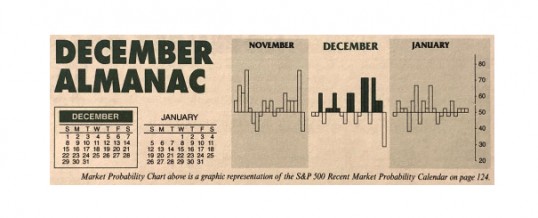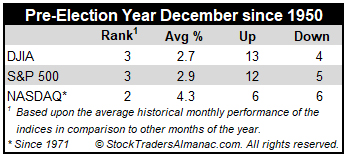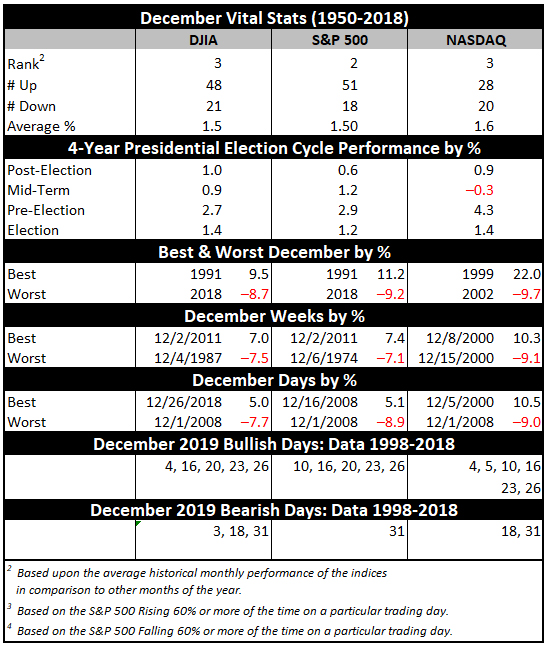
December is now the number two S&P 500 month and the third best month on the Dow Jones Industrials since 1950, averaging gains of 1.5% on each index. It’s the third best month for NASDAQ since 1971. Last year DJIA suffered its worst December performance since 1931 and its fourth worst December going all the way back to 1901. However, the market rarely falls precipitously in December and a repeat of last year is not that likely. When it does it is usually a turning point in the market—near a top or bottom. If the market has experienced fantastic gains leading up to December, stocks can pullback in the first half.
In pre-election years, December’s overall ranking remains about the same across the board however, average gains improve handsomely. DJIA averages 2.7%, S&P 500 2.9% and NASDAQ 4.3%. DJIA has advanced in 13 of the last 17 pre-election year Decembers. DJIA’s worst pre-election December was in 2015 when it declined a modest 1.7%. DJIA’s best pre-election year December was in 1991, up 9.5%.

Trading in December is holiday inspired and fueled by a buying bias throughout the month. However, the first part of the month tends to be weaker as tax-loss selling and yearend portfolio restructuring begins. Regardless, December is laden with market seasonality and important events.
Small caps tend to start to outperform larger caps near the middle of the month (early January Effect) and our “Santa Claus Rally” begins on the open on Christmas Eve day and lasts until the second trading day of 2020. Average S&P 500 gains over this seven trading-day range since 1969 are a respectable 1.3%.
This is our first indicator for the market in the New Year. Years when the Santa Claus Rally (SCR) has failed to materialize are often flat or down. The last six times SCR (the last five trading days of the year and the first two trading days of the New Year) has not occurred were followed by three flat years (1994, 2004 and 2015) and two nasty bear markets (2000 and 2008) and a mild bear that ended in February 2016. As Yale Hirsch’s now famous line states, “If Santa Claus should fail to call, bears may come to Broad and Wall.”
December Triple Witching Week is more favorable to the S&P 500 with the entire week logging gains twenty-six times in the last thirty-five years. The week after December Triple Witching is the best of all weeks after Triple Witching for DJIA and is the only one with a clearly bullish bias, advancing in twenty-seven of the last thirty-seven years. Small caps shine especially bright with a string of bullish days that runs from December 19 to 26.
Trading the day before and the day after Christmas is generally bullish across the board with the greatest gains coming from the day before (DJIA up eight of the last twelve). On the last trading day of the year, NASDAQ has been down in fifteen of the last nineteen years after having been up twenty-nine years in a row from 1971 to 1999. DJIA and S&P 500 have also been struggling recently and exhibit a bearish bias over the last twenty-one years.

NOV
2019
